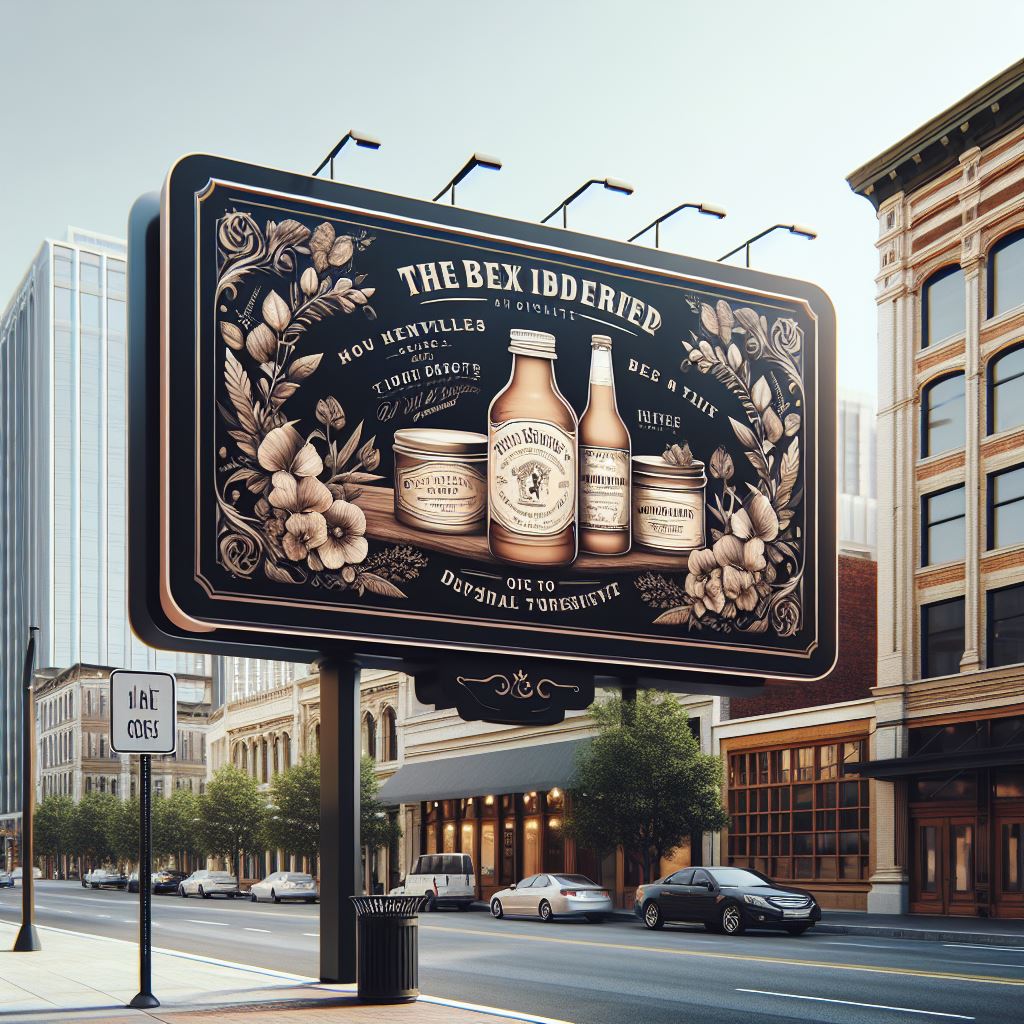In the bustling world of retail, standing out from the competition is crucial. Local advertising is a powerful tool that can help businesses connect with their community and attract new customers. Unlike broader national campaigns, local advertising focuses on targeting a specific geographic area, making it more relevant and impactful for retailers.
One of the significant benefits of local advertising is its ability to create a strong, personal connection with potential customers. By tailoring your message to the local culture and community values, you can establish a rapport that larger, more generic campaigns often miss. This targeted approach not only grabs attention but also fosters loyalty and trust.
Moreover, local advertising offers various channels to reach potential customers, including local newspapers, community events, radio stations, and social media platforms. Utilizing these channels effectively can significantly boost your retail success. For instance, sponsoring a local event or running a targeted social media campaign can enhance your visibility and drive foot traffic to your store.
Ready to elevate your retail business with effective local advertising strategies? Act now and reserve your ad space today!
Importance of Local Advertising for Retailers

The significance of local advertising for retailers cannot be overstated. For businesses rooted in specific communities, local advertising serves as a lifeline, ensuring they remain top-of-mind for residents. One of the primary advantages is the ability to target a highly specific audience, which can lead to more efficient and effective marketing efforts compared to broader, less focused campaigns.
Local advertising also allows for a more personalized and relevant message. Retailers can highlight local events, feature community members, and even address regional concerns in their ads. This level of personalization helps build a stronger emotional connection with customers, fostering greater brand loyalty and repeat business.
Furthermore, local advertising tends to be more cost-effective. Smaller-scale campaigns can be executed with a tighter budget while still yielding impressive results. For example, placing an ad in a local newspaper or sponsoring a local sports team can provide high visibility at a fraction of the cost of national advertising campaigns.
Another critical aspect is the opportunity for immediate feedback and adaptation. Local businesses can quickly gauge the effectiveness of their advertising efforts through direct customer interactions and adjust their strategies accordingly. This agility ensures that marketing efforts remain relevant and effective, ultimately driving more foot traffic and sales.
In summary, local advertising not only enhances visibility but also builds stronger community ties, offering a competitive edge that is essential for retail success.
Effective Local Advertising Channels
Choosing the right local advertising channels is crucial for maximizing the impact of your marketing efforts. Several effective channels can significantly boost your store’s visibility and drive traffic.
Local Newspapers and Magazines: Despite the digital age, print media remains a potent tool for local advertising. Local newspapers and magazines have a loyal readership that retailers can tap into. Ads in these publications can highlight special offers, new product lines, or upcoming events, ensuring they reach a dedicated audience.
Radio Advertising: Local radio stations are another excellent avenue for reaching your target audience. Radio ads can be tailored to specific times of the day when your potential customers are most likely to be listening, such as during morning and evening commutes. The personal and conversational nature of radio also helps in building a strong connection with listeners.
Social Media: Platforms like Facebook, Instagram, and Twitter offer advanced targeting options that allow retailers to narrow down their audience by location, interests, and demographics. Social media advertising is especially effective for engaging with a younger audience and can be used to promote everything from flash sales to community events.
Local Search Engine Optimization (SEO): Ensuring your business appears in local search results is essential. This involves optimizing your online presence so that your store shows up in searches for relevant keywords. Techniques include claiming your Google My Business listing, using local keywords in your website content, and gathering positive customer reviews.
Local Sponsorships and Events: Sponsoring local events, sports teams, or community organizations can greatly enhance your brand’s visibility. These sponsorships not only provide advertising opportunities but also position your business as a supportive community member, which can build goodwill and customer loyalty.
By leveraging these channels, retailers can create a multi-faceted local advertising strategy that reaches diverse segments of their community, ultimately driving more traffic and sales.
Successful Local Advertising Campaigns

Analyzing successful local advertising campaigns provides invaluable insights that can inspire your own strategies. Here are some noteworthy examples that have effectively boosted retail success:
1. The ‘Shop Small’ Movement: Initiated by American Express, this campaign encourages consumers to support local businesses during the holiday season. By leveraging social media, print ads, and community events, the ‘Shop Small’ movement has generated significant foot traffic and sales for small retailers. The campaign’s success lies in its ability to create a sense of community and local pride.
2. Localized Social Media Challenges: A local bakery in Portland, Oregon, launched a social media challenge called #PortlandPieDay, encouraging customers to share photos of their pie purchases with the hashtag. This campaign not only increased their social media engagement but also drove in-store sales by creating buzz and fostering a sense of local participation.
3. Geo-targeted Mobile Ads: A clothing retailer in Austin, Texas, successfully used geo-targeted mobile ads to attract nearby shoppers. By offering limited-time discounts and promotions to people within a specific radius of their store, they saw a significant uptick in foot traffic and sales. The immediacy and relevance of these ads made them particularly effective.
4. Community-based Loyalty Programs: A bookstore in Seattle implemented a loyalty program that rewarded customers not just for purchases, but for participating in community events and book clubs. This approach strengthened their local customer base and increased repeat visits, while also fostering a sense of community around their brand.
5. Local Influencer Partnerships: A boutique in Miami collaborated with local fashion influencers to promote their new clothing line. By featuring these influencers in their ads and social media posts, they were able to tap into the influencers’ loyal followers, thereby boosting both brand awareness and sales.
By examining these successful local advertising campaigns, retailers can glean strategies that resonate with their target audience, create a strong local presence, and drive both foot traffic and sales.
Measuring Local Advertising Success

Understanding how to measure the success of local advertising campaigns is crucial for optimizing future efforts and ensuring a return on investment. Here are some key metrics and methods to effectively evaluate your local advertising initiatives:
1. Foot Traffic: One of the most direct indicators of a successful local advertising campaign is an increase in foot traffic to your retail location. Utilize tools like footfall counters or even manual counting during peak hours to track changes in the number of visitors.
2. Sales Data: An uptick in sales, particularly during or immediately following a local advertising campaign, is a clear sign of success. Compare sales figures from before, during, and after the campaign to assess its impact.
3. Customer Feedback: Collecting feedback from customers can provide insights into how they heard about your business and what motivated their visit. Surveys, suggestion boxes, and casual in-person conversations can be effective methods for gathering this information.
4. Digital Metrics: For campaigns that include digital elements, such as social media ads or email marketing, track metrics like click-through rates (CTR), engagement rates, and conversion rates. These can help you understand how well your digital efforts are resonating with your target audience.
5. Coupon Redemption Rates: If your campaign includes coupons or promotional codes, tracking their redemption rates can offer a clear measure of effectiveness. High redemption rates typically indicate that your advertising message is compelling and has driven customers to take action.
6. Brand Awareness: While more challenging to quantify, measuring changes in brand awareness can be achieved through surveys and market research. Ask customers if they are more familiar with your brand following the campaign, and if they associate your business with specific values or products.
By systematically measuring these metrics, retailers can gain a comprehensive understanding of their local advertising campaigns‘ effectiveness. This data-driven approach enables continuous improvement, ensuring that future campaigns are even more successful in driving traffic and sales.
Tips for Optimizing Local Advertising

To ensure your local advertising campaigns are as effective as possible, consider these essential tips for optimization:
1. Know Your Audience: Understanding your target demographic is crucial. Tailor your messages to resonate with their specific needs, preferences, and behaviors. Utilize customer data and market research to refine your targeting.
2. Choose the Right Channels: Not all advertising channels will be equally effective. Determine where your audience spends their time, whether it’s local newspapers, social media platforms, or community events, and focus your efforts there.
3. Utilize Geotargeting: Digital advertising platforms offer geotargeting features that allow you to reach potential customers within a specific geographic area. This ensures your ads are seen by people most likely to visit your store.
4. Leverage Local Partnerships: Collaborate with other local businesses and organizations. Joint promotions or sponsorships can extend your reach and establish your presence within the community.
5. Monitor and Adapt: Continuously track the performance of your ads using the metrics discussed in the previous section. Be prepared to adapt your strategies based on what the data reveals, whether it means tweaking your message or shifting your budget to more effective channels.
6. Personalize Your Campaigns: Personalized marketing can significantly boost engagement. Use customer data to send tailored messages, offers, and recommendations that make your audience feel valued and understood.
7. Offer Incentives: Providing discounts, coupons, or exclusive offers can encourage immediate action from potential customers. Ensure these incentives are compelling and clearly highlighted in your advertisements.
8. Stay Consistent: Consistency in your branding and messaging builds trust and recognition over time. Ensure all your advertising materials, from print to digital, carry a cohesive look and voice.
By implementing these tips, you can enhance the efficiency and impact of your local advertising efforts, driving greater foot traffic and sales for your retail business. Act now and reserve your ad space today! Visit goldcreekllc.net to get started.


2 thoughts on “Local Advertising Examples That Boost Retail Success”